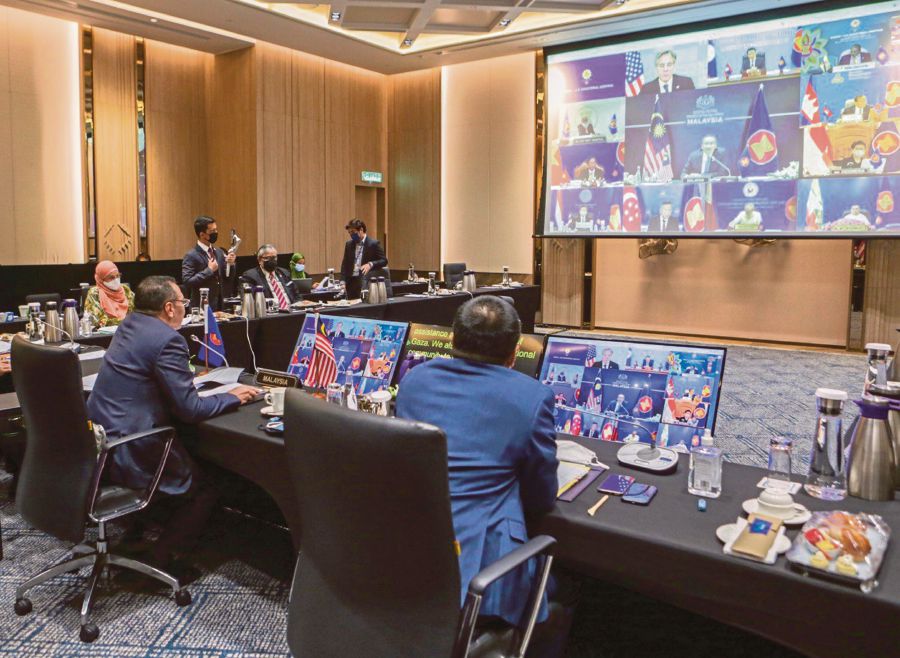The story of Asean began with estrangement, insecurity and the intractable relationship between states in Southeast Asia. Against the backdrop of the Cold War, leaders of the fledgling nations were concerned that the democracy-communism rivalry will push the relatively new states to take sides.
Afterwards, Southeast Asian countries were at loggerheads and intra-state conflict would become the order of the day. Unlike Europe, Southeast Asia is a maritime region. The region is multi-faceted in its diversity in cultures, ethnicities, religions and history. Which is why it is prone to intra-state conflict and territorial dispute among neighbours.
Determined to avoid the prospect of destructive conflict at all costs, it was Malaysia's founding father, Tunku Abdul Rahman, who mooted the idea of regional collaboration by connecting nations within similar ethnological and geographical groups.
Prior to the founding of Asean, there were at least three attempts to bring together Southeast Asian nations into a single multilateral organisation.
Within four years, three regional platforms were initiated — the Southeast Asia Friendship and Economic Treaty in 1959, the Association of Southeast Asia in 1961 and Greater Malayan Confederation in 1963.
Those initiatives were stillborn, mainly due to trust issues among the countries and suspicion that one is being used as a pawn in the major powers' geopolitical game.
The modern nation-state is a product of colonial design. Hence, there are many unresolved issues that hinder efforts towards regional collaboration. Despite failures, the aspiration for broader membership remained intact.
The end of konfrontasi between Indonesia and Malaysia provided a window of opportunity not only for conflict reconciliation, but also a testing ground for the new regional organisation.
It was behind-the-scenes diplomatic engagement by towering figures like Tun Ghazali Shafie and General Ali Moertopo that finally disentangled the diplomatic deadlock between the two countries. As Ghazali put it, "Asean rose from the ashes of konfrontasi."
Eventually, Ghazali and Ali Moertopo dug deeply into the common cultural heritage between the two nations. Subsequently, they realised that whenever there was a sense of insecurity, the people tend to get together or berkampung to resolve disputes.
Conflict happens because of the intractable relationship between countries. The founding of Asean in 1967 provides nations a platform for multilateral diplomacy at the regional level and constant engagement between parties in searching for common ground.
Over five decades, Asean has produced numerous extraordinary political ideas to accommodate issues and disputes among members and impending threats from external factors. Pushed by world events such as the Cold War, Asean collectively formulated the Zone of Peace, Freedom and Neutrality (Zopfan), which was signed by the foreign ministers of Asean on Nov 27, 1971, in Kuala Lumpur.
Zopfan had two-pronged objectives. On one hand, it was a statement for non-alignment policy. On the other hand, it proclaimed an unconditional aspiration for a nuclear-free zone in Southeast Asia. Zopfan managed to defuse the intensity of the Cold War in Southeast Asia and the keep major powers' rivalry in check.
After 54 years, Asean is once again in a precarious period. Washington's policy to prioritise the Indo-Pacific and Beijing's increasingly assertive policy in the South China Sea have pushed the organisation into a corner again.
Meanwhile, conflict is also simmering in the inlands of Southeast Asia. There is much anxiety about China's activities in the Mekong River.
The river runs through five of Asean's 10 member states: Thailand, Myanmar, Vietnam Laos and Cambodia. China's valve-like control of the river's upstream gives Beijing considerable influence over its southward flows, which can disrupt agriculture-based activities.
As a foreign policy observer, I see this as a geopolitical time bomb that is waiting for the right time to explode. Evidently, conflicts are brewing at the front and backyards of Asean countries.
Although every country is sovereign and capable of safeguarding their own interests, we should not forget the tradition of berkampung as a mechanism for Asean to cope with any grave issues that may arise. Only by standing together as one voice can Asean member states overcome the ordeals and threats that are looming over the region.
The writer is executive director
of NADI Centre, a consulting
firm focused on strategic policy
research and advocacy





